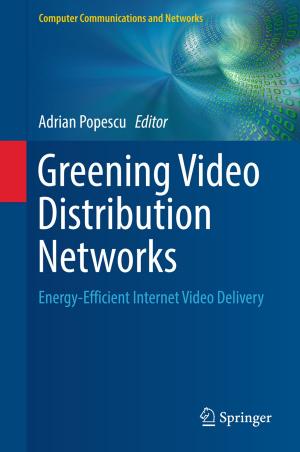Real-time Monitoring and Operational Control of Drinking-Water Systems
Nonfiction, Science & Nature, Technology, Automation, Engineering, Environmental| Author: | ISBN: | 9783319507514 | |
| Publisher: | Springer International Publishing | Publication: | May 18, 2017 |
| Imprint: | Springer | Language: | English |
| Author: | |
| ISBN: | 9783319507514 |
| Publisher: | Springer International Publishing |
| Publication: | May 18, 2017 |
| Imprint: | Springer |
| Language: | English |
This book presents a set of approaches for the real-time monitoring and control of drinking-water networks based on advanced information and communication technologies. It shows the reader how to achieve significant improvements in efficiency in terms of water use, energy consumption, water loss minimization, and water quality guarantees.
The methods and approaches presented are illustrated and have been applied using real-life pilot demonstrations based on the drinking-water network in Barcelona, Spain.
The proposed approaches and tools cover:
• decision-making support for real-time optimal control of water transport networks, explaining how stochastic model predictive control algorithms that take explicit account of uncertainties associated with energy prices and real demand allow the main flow and pressure actuators—pumping stations and pressure regulation valves— and intermediate storage tanks to be ope
rated to meet demand using the most sustainable types of source and with minimum electricity costs;
• decision-making support for monitoring water balance and distribution network quality in real time, implementing fault detection and diagnosis techniques and using information from hundreds of flow, pressure, and water-quality sensors together with hydraulic and quality-parameter-evolution models to detect and locate leaks in the network, possible breaches in water quality, and failures in sensors and/or actuators;
• consumer-demand prediction, based on smart metering techniques, producing detailed analyses and forecasts of consumption patterns, providing a customer communications service, and suggesting economic measures intended to promote more efficient use of water at the household level.
Researchers and engineers working with drinking-water networks will find this a vital support in overcoming the problems associated with increased popu
lation, environmental sensitivities and regulation, aging infrastructures, energy requirements, and limited water sources.
This book presents a set of approaches for the real-time monitoring and control of drinking-water networks based on advanced information and communication technologies. It shows the reader how to achieve significant improvements in efficiency in terms of water use, energy consumption, water loss minimization, and water quality guarantees.
The methods and approaches presented are illustrated and have been applied using real-life pilot demonstrations based on the drinking-water network in Barcelona, Spain.
The proposed approaches and tools cover:
• decision-making support for real-time optimal control of water transport networks, explaining how stochastic model predictive control algorithms that take explicit account of uncertainties associated with energy prices and real demand allow the main flow and pressure actuators—pumping stations and pressure regulation valves— and intermediate storage tanks to be ope
rated to meet demand using the most sustainable types of source and with minimum electricity costs;
• decision-making support for monitoring water balance and distribution network quality in real time, implementing fault detection and diagnosis techniques and using information from hundreds of flow, pressure, and water-quality sensors together with hydraulic and quality-parameter-evolution models to detect and locate leaks in the network, possible breaches in water quality, and failures in sensors and/or actuators;
• consumer-demand prediction, based on smart metering techniques, producing detailed analyses and forecasts of consumption patterns, providing a customer communications service, and suggesting economic measures intended to promote more efficient use of water at the household level.
Researchers and engineers working with drinking-water networks will find this a vital support in overcoming the problems associated with increased popu
lation, environmental sensitivities and regulation, aging infrastructures, energy requirements, and limited water sources.















